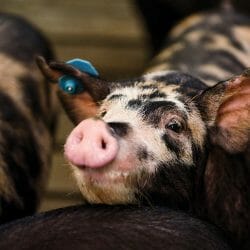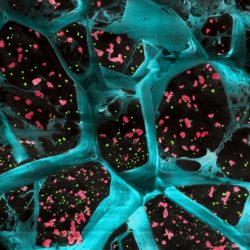Here Comes the Sun
A shared passion for renewable energy technology has brought together two professors with two very different areas of expertise.
Marianne Fairbanks, an assistant professor of design studies in the UW’s School of Human Ecology, is an expert in fibers, fabrics, design, and dyes. Trisha Andrew, an assistant professor of chemistry, uses chemistry, materials science, and electrical engineering to develop low-cost, lightweight solar cells.
Together, they’re developing fabric capable of harnessing energy from the sun.
“The idea of building solar cells on fabric is potentially transformative,” Andrew says. “If we take this technology and grow devices on material, then we could talk wearable technology, solar curtains, solar umbrellas, solar tents, or applications for the military.”
“Science and art aren’t too different,” Fairbanks says of their project. “We’re all experimenting. To get to do it together is a dream come true.”
Their collaboration is also unusual in attempting to overcome the manufacturing challenge currently slowing the rollout of cheap, consumer-friendly solar cells — namely, that so many emerging technologies are not integrated with actual manufacturing processes at any early stage of development.
Working side by side has already yielded compelling results. While Andrew’s previous solar-cell innovations consisted primarily of layering the necessary components of a solar cell onto lightweight substrates such as paper, Fairbanks’ special expertise led her to ask a totally different question: why not weave the solar textile from scratch?
That new concept would involve creating a spool of thread for all four of the necessary components of a solar cell. Once woven together, all of the textile’s woven junctions would be a functional solar cell, yielding a seamless and powerful new technology.
“I never would have thought of that,” says Andrew. “If we could literally weave together a solar cell? Mind-blowing.”
Published in the Winter 2015 issue




Comments
No comments posted yet.